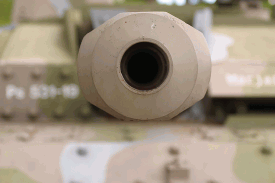
In the battle for tactical advantages, geospatial data is on the front lines.It provides not only exceptional reconnaissance but, where possible, daily location intelligence about enemy combatants.Field personnel are being trained as analysts and GIS specialists to develop spatial databases and map products to deliver actionable intelligence to soldiers in the Iraq war.
Just three weeks removed from the battlefield in Mosul, Iraq, Chief Warrant Office 2nd Class, Jason Feser said that the data he was presenting at the GEOINT Conference in San Antonio, were already out of date.The Chief was with the 72nd Striker Brigade and was the commander in charge of dispersing maps, imagery and other geospatial intelligence to platoon leaders.He assured the audience the data he was showing were unclassified and confirmed that his replacement was sure to have the most current field intelligence.
That intelligence includes 19 layers of both GEOINT, mostly high resolution remotely sensed data of Mosul, and HUMINT (human-gathered intelligence).Using a DigitalGlobe viewer, ArcGIS Server and the MySQL database, the Chief's primary job was to gather information from a variety of sources and integrate it with his existing geospatial database.He captured disparate data from a variety of Excel spreadsheets including the chaplain's list of clerics associated with each local mosque, tribal information collected by the CIA, schools, and neighborhood politicians.This was of utmost importance to platoon leaders who would receive daily strike packages and needed to know which neighborhood leaders could be contacted when entering the area. In turn, any newly acquired, local information would be brought back to Feser and entered with other data.
Unfortunately, that's where the information stops.Feser said that his database was shared only with the 175th Topographic Company in Baghdad and that there was no mechanism to transmit the data back to the National Geospatial-Intelligence Agency (NGA).Likewise, some information does not necessarily make it into Feser's database.There is a plethora of data and not all of it is relevant but much of it has a geospatial context.Feser rhetorically asked, "How much data is too much information? How do you stay relevant?" In other words, is the information derived from any single soldier or even from his brigade, better or more important than someone else's data?
Video Forensics
Feser shared his story about identifying the location of insurgents responsible for the suicide bombing of the Camp Marez mess hall that killed 14 U.S.soldiers and wounded 50 others.A video tape of the insurgent's surveillance of the mess hall posted on the Internet was used in a forensic analysis to determine who was responsible for the bombing.By examining the viewshed based on the camera angle from the video tape, Feser was able to identify the buildings where the video was made.That information led to the capture of the insurgents."They like to brag," said Feser, referring to the insurgents choice to post the video so other insurgents will be motivated to continue the attacks.
"This is what I need"
When asked what he needed to perform his job more effectively, given all the tools or data that he had or could have at his disposal, he listed three items: stereo imagery, color, and 1-inch resolution imagery.Why 1-inch? Because he once provided an image of a building that was a target package for a certain platoon that was missing one vital piece of information.The image had excellent detail except for the location of a clothes line in the backyard of the building.Having that information would have allowed the platoon to avoid running into the line and perhaps endangering the mission.